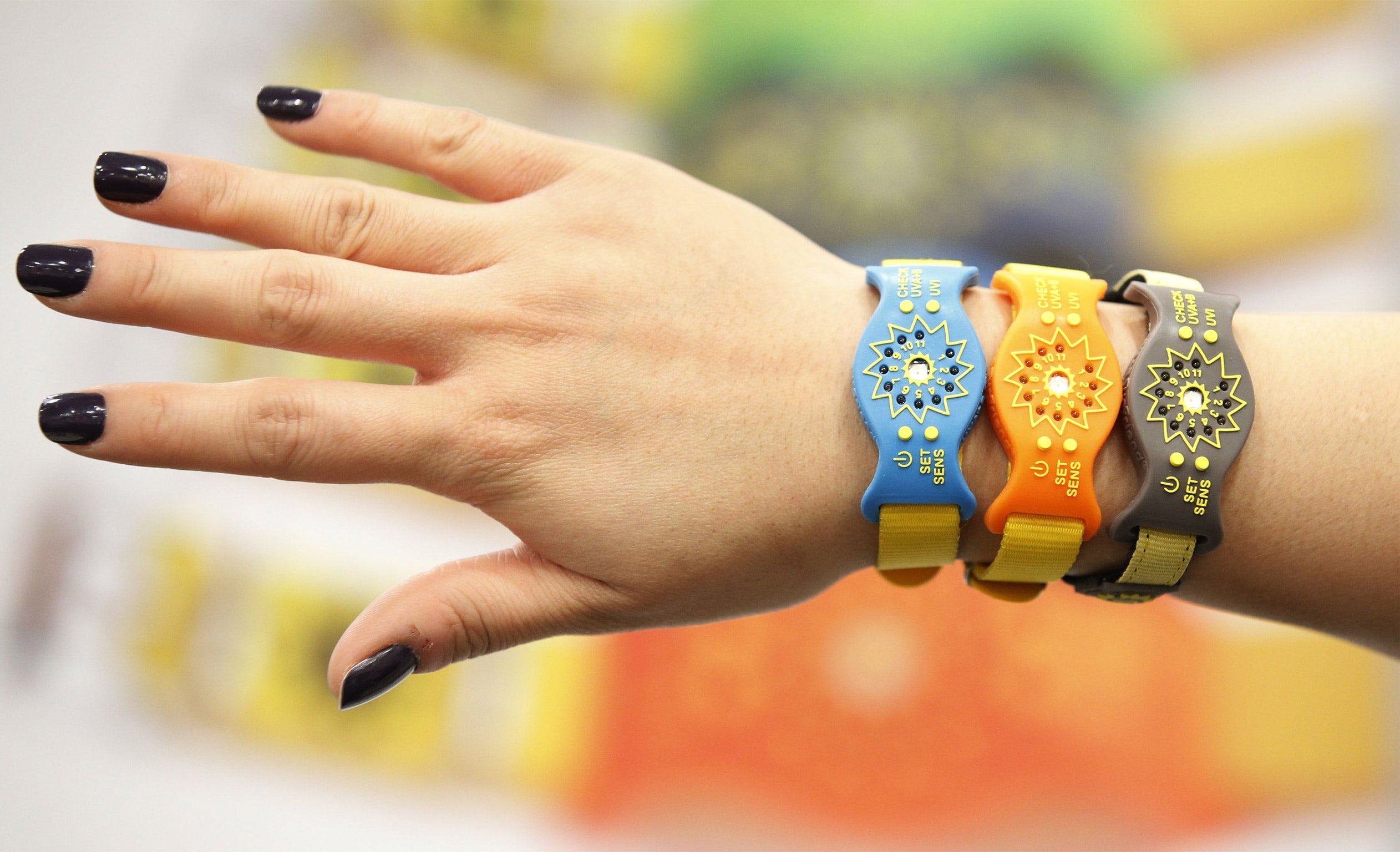The tech is smart... but who’s going to wear it?
Jonathan Owen tries on shorts which measure muscle movement at a show unveiling the latest in wearable technology

Clambering into a pair of lycra cycling shorts in the gents may not sound very technological, but these are no ordinary shorts. For starters, they cost £640 a pair. And the fabric contains embedded sensors which relay signals about your muscle movement.
I tried to focus on the technology, as a man struggled to screw a plastic sensor to the front of my skintight shorts – to the bemused glances of men answering calls of nature. The stares got more intense when I started running on the sport and stretching my legs – every movement I made was displayed in a constantly moving graphic on a smartphone being held in front of me.
After a few minutes, my introduction to the world of wearable technology was over. The man who lent me the shorts, Janne Pylvas, the director of Mbody, boasted: “These are for elite athletes... our customers include people like Red Bull and McClaren. We can measure your muscles and show you exactly what you are using and where.”
Indeed. But the shorts were only one of the attractions at Britain’s first wearable technology show – a two-day event which opened in Kensington Olympia, London, today.
Dozens of companies were fighting for the attention of hundreds of delegates from the technology industry in the quest for a slice of the billions the market is predicted to be worth in the next few years. Wearable technology, aided by smartphone apps, is coming of age as technological advances mean heavy, bulky sensors are a thing of the past.
Take the Glowfaster “smart running jacket”, which goes on sale this year and is priced at under £100. It’s a running jacket synced up to your phone and a heart-rate sensor, which flashes when you hit whatever speed you have set yourself.
In pictures: Wearable Technology Show
Show all 5If you go off the pace, the light stays on. I toyed with the idea of running around to test it, but could hardly make out the light. It was impressive in the dark room where the jackets were on display though.
“It’s like Tron, it’s awesome, isn’t it?” said Glowfaster’s Janine Hogan, with the wild-eyed zeal of someone on a mission. The jackets actually don’t look bad, and the light element is a discreet bit of piping along the sleeves and up the middle. Former Royal Marine-turned-fitness-instructor Simon Weatherall, who came up with the idea, said: “It’s got to be wearable. You don’t want to look like a berk in it.”
Aside from “intelligent clothing”, there were stands with tech accessories ranging from wristbands which tell you whether you’ve had too much sun to cameras you wear which randomly take pictures.
Many of the items are prototypes which are yet to go on sale to the general public but the demand is clear – almost 70 million smart wearable devices will be sold globally in 2017.
Wearable technology is increasingly moving into the mainstream, according to Katherine Hague, co-founder of technology e-commerce platform ShopLocket.
“One thing that fascinates me is how wearable technology is merging with regular products in our daily life. Five years ago, wearable technology was seen as this bizarre or expensive thing that didn’t fit in with your bracelet or your watch,” she said. “Now the style and brand of the product as a wearable technology is as important as it is when you’re buying shoes or a jacket.”
One delegate, Alena Ruprecht, 28, from Brighton, was wearing a pair of Google glasses not yet available in Britain. When I suggested having a gadget stuck in front of your face might not be a great look, she laughed. “These look very cyborg don’t they?” she said. “But they’ve got hipster models which look like regular glasses.”
Another visitor, Matt Bowen, 29, from Hitchin, Hertfordshire, has been wearing a Jawbone UP – a rubber wristband which contains a sensor – for more than a year. It works out how many steps he takes each day, how much sleep he gets, and whether he’s hitting targets he has set himself. “It’s a great motivator,” he said. “It looks good too. It’s quite subtle and not geeky.”
Subscribe to Independent Premium to bookmark this article
Want to bookmark your favourite articles and stories to read or reference later? Start your Independent Premium subscription today.

Join our commenting forum
Join thought-provoking conversations, follow other Independent readers and see their replies